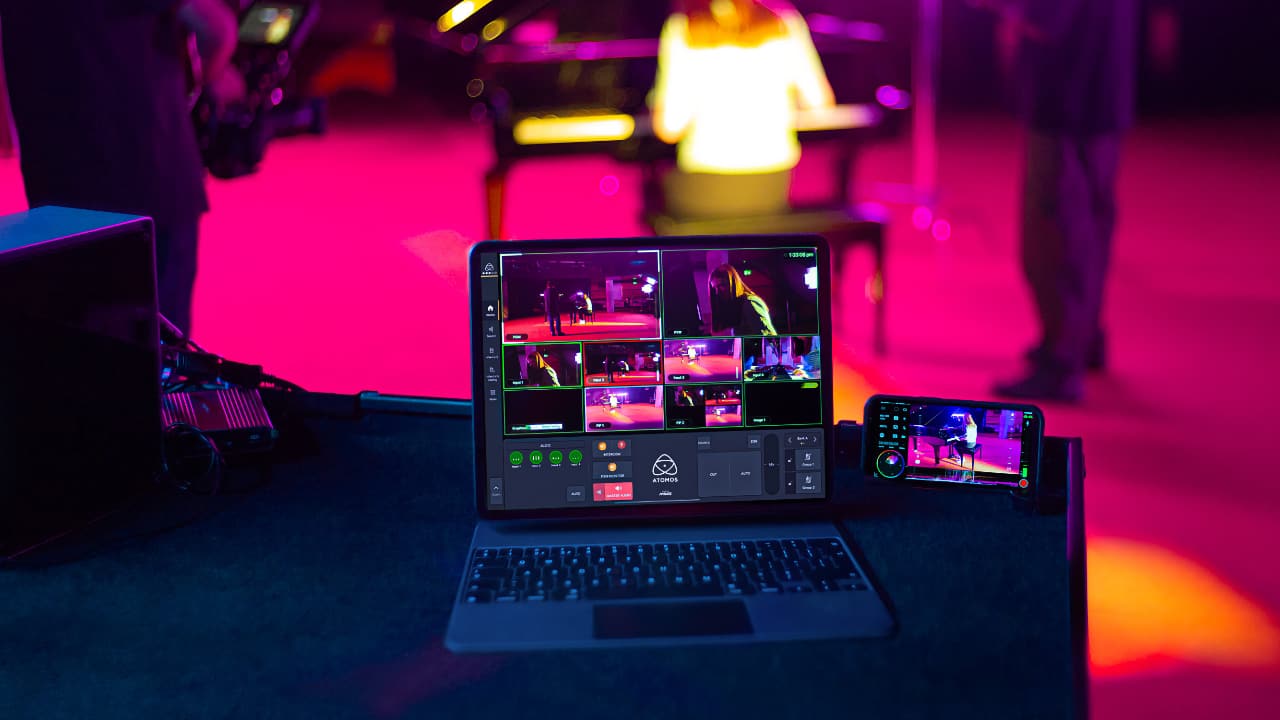
Atomos has not only gone live with its Cloud Studio but is also adding NDI to selected monitor-recorders, suddenly bringing NDI connectivity to a huge range of cameras.
Let’s start with the addition of NDI to Atomos’ range of CONNECT monitor-recorders, which is fairly big news in that it opens up NDI connectivity to, well, pretty much anything you can attach a monitor-recorder to.
Essentially it means that anyone with a Ninja V or V+ fitted with an Atomos CONNECT, or a Shogun CONNECT, can use either WiFi or Ethernet to connect their cameras to a NDI network.
It’s enabled via a new NDI HX2 firmware update, available for $99/€99. This supports NDI HX2 transmission up to 1080p60 with Shogun CONNECT and Ninja V+ with Atomos CONNECT (1080p30 for Ninja V and ATOMOS CONNECT), while simultaneously recording in Apple ProRes or Avid DNx.
A camera and microphone can be connected by HDMI or SDI to the Atomos CONNECT series monitor-recorder, and then connected to a local area network. Once NDI is enabled to transmit, the video stream is available to any suitable device on the LAN sub-net. The NDI stream can then be viewed, recorded, or used as a source for OBs or a NewTek TriCaster, and then retransmitted as part of a larger production.
“Typically, NDI is associated with fixed acquisition points, for example PTZ cameras,” says Trevor Elbourne, CEO of Atomos. “Now we’re making it possible to use pretty much any HDMI or SDI-equipped camera as a mobile NDI source. It’s the perfect solution for creatives who need their content delivered live to a remote device, for review, recording or transmission.”
Atomos Cloud Studio goes live
The company has also announced that Atomos Cloud Studio is now available, offering a range of subscription-based tools for remote collaboration and live production.
The suite comprises Atomos Capture to Cloud (which offers direct integration with Adobe Camera to Cloud, powered by frame.io), the all-in-one Atomos Stream, and the currently still in beta Atomos Live Production, and also leverages the CONNECT range of network enabled monitor-recorder devices.
Basic camera to cloud functionality and 720p proxy quality is completely free, and more features can be added by purchasing a monthly subscription plan. For $5/€5 per month, up to five devices can be registered, all capable of uploading 1080p proxy files while recording using Atomos’ progressive file transfer technology. Moving through the four subscription tiers allows more devices to be deployed, with greater control over the proxy quality, and extends into live production with ‘on-air’ time credits, which can be purchased as part of a monthly plan or topped up when demand dictates. Top tier is $100 per month.
The Live Production beta provides access to three types of live production show. A Basic show would be perfect for a live webcast with up to 4 locked-off cameras, streaming to a single social media platform, for example a single operator wanting to cut multi-camera sources on YouTube Live. A Standard show incorporates more audio functionality, including intercom talkback, transitions and picture in picture, and would be ideally suited to a school sports event or concert.
The Advanced show brings all the features of Atomos Live Production into play for what the company promises is a truly polished output. The tools it provides include a fully featured 4-input video switcher, sound mixer, video transition effects, still graphics, animated graphics, tally lights when cameras are live, and a fully featured intercom system.
Source inputs can be a camera-mounted Ninja V or Ninja V+ fitted with an ATOMOS CONNECT module, or the all-in-one Shogun CONNECT. In addition, Atomos will also offer a Pro Camera iOS app, a powerful 4K video capture app for filmmakers that turns the Apple iPhone into an alternative live production source.
“We see it as augmenting video production,” says Elbourne. “Filmmakers and video content producers everywhere can access Atomos Cloud Studio to collaborate and share their work faster than ever before, create a polished live production or stream content to the platform of their choice directly from the camera.”
Tags: Production


Comments